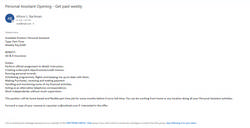The Monmouth University Institute for Global Understanding (IGU) and Urban Coast Institute (UCI) began the second season of their joint Global Ocean Governance Lecture Series with a panel discussion of international issues and challenges concerning the protection of whales, on Wednesday, Oct. 13.
The discussion was moderated by Professor Randall Abate, director of the IGU, and included presentations from Howard Rosenbaum, Director of the Wildlife Conservation Society Ocean Giants Program, Francine Kershaw, a Staff Scientist for the Natural Resources Defense Council (NRDC), and Cameron Jefferies, an Associate Professor of Law at the University of Alberta (Canada).
Tony Macdonald, Director of the UCI, gave brief opening remarks to the panelists and listeners.
“This topic couldn’t be more timely,” Macdonald said. “What’s going on in this region, [as well as] internationally. All the things that are going on in D.C. right now with regard to greater awareness of what we can learn from science, and what we can learn to live sustainably and to be sure some of our great creatures thrive in the future.”
Rosenbaum is a senior conservation scientist and director of the Wildlife Conservation Society’s (WCS) Ocean Giants Program, which aims to secure the future of whales, dolphins, and other marine species.
Witnessing whales in-person would have been considered the sighting of a lifetime as recent as a decade or two ago, and now they are somewhat becoming more commonplace, Rosenbaum explained. “That’s raised a whole series of issues about protections and governance and what we do about this.”
Over the last hundred years, it was estimated that nearly three million whales were killed as a result of the modernized commercial whaling effort, according to Rosenbaum. Those efforts do not factor in all of the historical pelagic efforts that occurred centuries before.
This new era of whale conservation began with international conventions, moratoriums on commercial whaling, and countries protecting their own natural resources within their own exclusive economic zones, including important migratory habits such as breeding and feeding grounds, Rosenbaum explained.
National and regional level efforts, as well as the conservation ventures that have occurred through WCS, have led to 70 to 90 percent recovery of these pre-whaling estimates.
“We do know the formula and recipe that works to help protect whales and steward their recovery through time.”
Rosenbaum oversees a global program at WCS, which works in six major regions through the world’s ocean on a variety of critically endangered, to threatened, recovering populations of whales, dolphins, and other marine mammals.
“We focus mainly on some of the major threats, current and emerging that these animals face around the world,” Rosenbaum said. “[It] involves all of these industrial activities that may be impacting these animals.”
In December of 2020, a humpback whale was spotted swimming up the Hudson River. “People have gotten excited seeing that iconic lunch feeding animal with the Empire State Building in the background, but it’s not only a rosy story here,” Rosenbaum said.
There are ongoing, unusual mortality events for three of the large whale species, including humpback whales of which about 50 of the mortalities are related to ship strikes and other anthropogenic factors like net entanglements, Rosenbaum explained.
“These animals do garner a lot of interest in this area,” Rosenbaum said. “They’re amazing wildlife spectacles to see and with that comes a new level of dedication, protection governance, and stewardship that’s needed for this region.”
Major threats are not necessarily on the whaling front, instead relating to fisheries interactions, entanglement, ship strike, and noise from seismic surveys, academic or industrial shipping. Concerns about habitat alteration or modification, especially in regards to large-scale offshore wind development, are prevalent.
“We’ve done a lot of work on these fronts to guide best practices for all of these types of threats, but there’s more work that needs to be done,” Rosenbaum said.
Next, Abate introduced Kershaw, a Staff Scientist for the Natural Resources Defense Council (NRDC). NRDC’s approach to advocacy is to combine legal advocacy with policy advocacy and science, experts in those three areas often working together on every issue.
The gulf stream, a swift Atlantic ocean current, has widened over time and moved closer to the continental shelf. This results in an intrusion of warm water from the gulf stream onto the shelf and into the gulf of Maine. Such a significant change in oceanography over the last 10 years comes as a direct result of climate change, Kershaw explained.
North atlantic “right whales” have traditionally undertaken a regular, annual migration from carving grounds in the southeast of Florida and likely Georgia, reaching up into North Carolina and then up the coast along the continental shelf to feeding areas in the gulf of Maine and further north into Atlantic Canada.
“They have a relatively narrow diet,” Kershaw said. “Right whales rely very heavily on a zooplankton species called Calanus finmarchicus for their diet.”
Calanus is very sensitive to water temperature and oceanographic conditions, so as the gulf of Maine has warmed, the distribution of calanus has shifted into new areas, including further north.
Right whales have also shifted their distribution as well, moving into new areas and spending more time in places where they were only seasonal visitors before, Kershaw explained.
“They would arrive for a few days, eat and then leave,” Kershaw said. “Now they’re hanging out in some areas for many, many months of the year. These climate-driven shifts have increased the overlap of whale habitats with areas where there are more harmful human activities to whales.”
This shift necessitates changing the ways we govern our ocean to protect these species, Kershaw said. The change must come quickly, at least within the next 10 years, as these shifts happen on a faster time scale than even a decade could provide.
A major result of these shifts has been a significant increase in the number of whale entanglements in many different types of fishing gear, but for right whales in particular have been victims of vertical buoy lines that are associated with lobster and crab trap fisheries.
“This is really problematic,” Kershaw said. “When a right whale encounters a rope, it may have its mouth open for feeding or it may bump into it. It’s very easy for the line to become wrapped around the right whales in particular, as they tend to roll, which is an anti-predator response to try and get away. Unfortunately, when you roll while attached to a rope, the rope is much more likely to get wrapped around you.”
Next, Abate introduced Jefferies, an Associate Professor of Law at the University of Alberta (Canada).
“One of the interesting features I want to highlight is that Canada is an outlier when it comes to its approach to international whale management right now,” Jefferies said. “Canada has 37 cetacean species within its waters, but currently is not a member of the International Whaling Commission (IWC).”
The International Convention for the Regulation of Whaling was signed in 1946, fulfilling a dual purpose of conserving whales and enabling an orderly development of the whaling industry, Jefferies explained.
“From a law and policy perspective, I think we can really break down the history of the IWC and the regulatory measures it’s taken into two broad phases,” Jefferies said. “The first being 1946, and then 1985 where the IWC struggled to constrain international commercial whaling activities and really oversaw the continued over-exploitation of many of these great whales,” Jefferies said. The second phase, initiated in 1985, continued to the present and is where the IWC has overseen the institution and maintenance of a commercial whaling moratorium.
During this period of moratorium, there has been recovery of whale species, but there has also been escalated tensions between pro and anti-whaling contracting governments. A certain number of countries have opted out of the regime in order to continue whaling, most notably Japan. Norway and Iceland have objected to the moratorium as well.
Canada is an interesting case study, Jefferies explained, because the country withdrew from the IWC at the time that the commercial moratorium was proposed in 1982. This indicates that Canada no longer had a direct interest in any issues that the IWC was managing, having banned commercial whaling domestically 10 years prior.
The country had no plans to return, but an issue “simmering in the background” was indigenous whaling.
“That is something that inuit communities in Canada’s north continue to do,” Jeffreries said. “Canada kind of sits on the sidelines as the IWC struggles along to try and make sense of a lot of these modern threats to whale conservation that we’ve heard about today.”
Jefferies considered there to be an opportunity for the “Canadian situation” to be seen as a solution rather than a problem, as the approach that Canada has taken domestically since withdrawing strikes a better balance between the importance of indigenous rights and conservation objectives.


